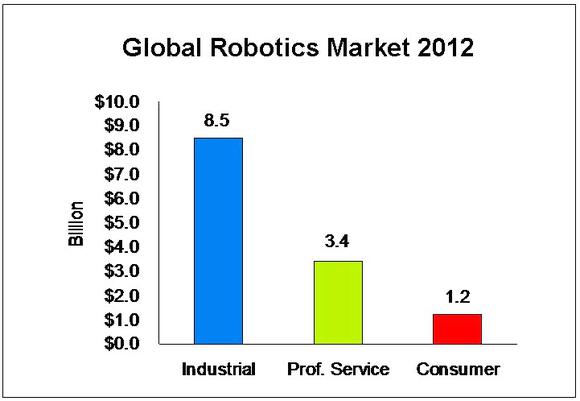Filed under: Investing
Can't make it to the 2014 International Consumer Electronics Show? Never fear: The Fool is there to check out the tech and report back on who's there and what's new. With thousands of products in more than 15 categories, the next big thing is surely making its debut at the CES in Las Vegas.
Stopping by the Qualcomm booth, the Fool's Evan Niu gets a look at the new Snapdragon 805 in action. The new chip comes in under 2 watts and brings console-quality graphics to mobile devices.
It's technology like this that's led David Gardner to impossible gains like 926%, 2,239%, and 4,371% and he's ready to do it again. You can uncover his scientific approach to crushing the market today by simply clicking here now. Access is limited, so act fast!
A full transcript follows the video.
Evan Niu: Hey, Fools, Evan Niu here at CES. We're at Qualcomm's booth, and taking a look very specifically at the Snapdragon 800 chips that came out last year. This year, Qualcomm has really been pushing big on the graphics side; a lot of gaming displays up here. Tell us about the graphics capabilities in the Snapdragon 800.
Qualcomm Representative: Sure. Snapdragon 800 is the processor that we had shipping. We had lots of phones, like Samsung Galaxy S4, Nexus 5, LG G2, HTC 1; all are based on Snapdragon 800.
This year we announced the new product, called Snapdragon 805. That's the newest processor, and what this brings is a new GPU and new graphics capabilities with it. We're showcasing some of the graphics capabilities over here.
I'd like to show this demo to you first. This is the demo called the new Adreno 420 GPU, that is part of the Snapdragon 805 processor. It is 40% faster, it also is more efficient, and it has new features, which is cool. It's a complete DirectX 11.2 hardware, so it does support things like tessellation and geometry shaders.
This demo in particular is about the tessellation. I'll go over here so you can capture it on TV. This is how the game and graphics content looks today on mobile, where the ground is very flat, there's no details on the back of the hornet. But then when you have Snapdragon 805 and the ability to do dynamic tessellation, combined with the displacement mapping, it's able to add more data, more geometry, and more triangles to the already existing geometry within the game or content.
With that, what we can do is show more detail. You can see, on the ground, look at all the crevasses and the depth effects over there. You can look at the back of the hornet and you can see all these details on the eye and the back. All of these are possible because of the new dynamic tessellation feature on the GPU.
Niu: I know that graphics has been an important competitive area for you guys, versus NVIDIA . NVIDIA has always, historically, been very good at graphics. I know they announced their new Tegra chip with like 190-some odd cores. How do you see the newest Snapdragon holding up against those new Tegras?
Qualcomm Representative: I don't know enough about NVIDIA, so I wouldn't talk about it, but I can say that this 805 with Adreno 420 GPU brings all the capabilities that you would have on the highest NPCs and consoles because of this DirectX 11.2 hardware capability, so things like tessellation and geometry shaders are now possible on mobile.
The cool thing about it is that you can do the high dynamic or high fidelity geometry, and export all this data and have these HD effects, but with tessellation you can do it within the one-person power envelope that you have.
This is a very efficient way of doing the console-quality gaming. With Snapdragon 805, we delivered on that, bringing in the console-quality graphics in the most efficient way, under two watts.
Niu: Thank you very much. That's the Snapdragon 805. For more on Qualcomm at CES, check back at Fool.com.
The article Qualcomm Does It Again originally appeared on Fool.com.
Evan Niu, CFA, owns shares of Qualcomm. The Motley Fool recommends NVIDIA and owns shares of Qualcomm. Try any of our Foolish newsletter services free for 30 days. We Fools don't all hold the same opinions, but we all believe that considering a diverse range of insights makes us better investors. The Motley Fool has a disclosure policy.Copyright © 1995 - 2014 The Motley Fool, LLC. All rights reserved. The Motley Fool has a disclosure policy.
Read | Permalink | Email this | Linking Blogs | Comments















